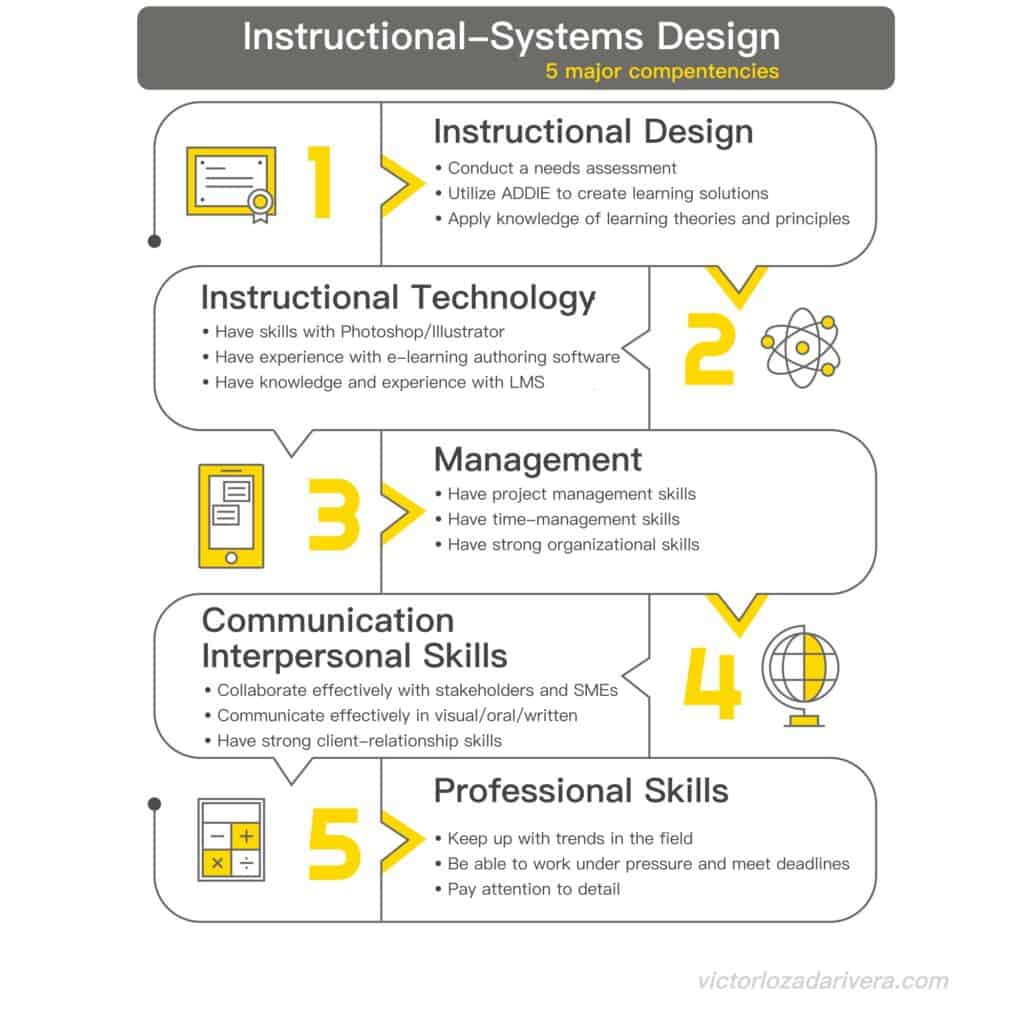ISD or Instructional-systems design is the science and art of creating detailed specifications for the development, evaluation and maintenance of situations which facilitate learning and performance.
IDT emphasizes two main elements:
- The Application of Systematic Design Processes
- The Use of Technology to Facilitate Learning and Improve Performance
Instructional systems design uses learning principles and methodologies to shape plans for instructional materials, activities, and information resources. Most models of instructional design include the elements of ADDIE—analysis, design, development, implementation, and evaluation.

Employers expect Instructional Systems Designers to have competences in these five major categories:
- Instructional Design
- Instructional Technology
- Management
- Communication and Interpersonal Skills
- Professional Skills
Here is a breakdown of each category.
Instructional Design
- Conduct a needs assessment
- Utilize ADDIE to create learning solutions
- Apply knowledge of learning theories and principles
- Choose and design instructional materials
- Apply various ID methodologies
- Use analysis techniques for determining content and tasks
- Choose and design appropriate instructional strategies
Instructional Technology
- Have graphic-design skills with relevant software such as Photoshop/Illustrator
- Have knowledge and experience with e-learning authoring software such as Captivate, Presenter, or Storyline
- Have knowledge and experience with LMS such as Blackboard, Moodle, or Canvas
- Master and use Microsoft Office tools
- Have video production skill with software such as Premiere or Final Cut Pro, Vyond
- Have knowledge and experience with screencasting tools such as Camtasia or Snagit
Management
- Have project management knowledge and experience
- Have time-management skills
- Have strong organizational skills
- Have multitasking or multi-projects skills
Communication/ Interpersonal
- Collaborate effectively with stakeholders, SMEs, teammates, and others
- Communicate effectively in visual, oral, and written form
- Have strong client-relationship skills
- Have strong team skills
Professional skills
- Keep up with trends in the field and be willing to learn new technology
- Be able to work under pressure and meet deadlines
- Pay attention to detail
- Be able to work independently
Conclusion
Instructional system designers should have a variety of skills to perform their job to expected standards.
However, many hiring managers mentioned being able to effectively collaborate with stakeholders, subject matter experts, and teammates, as well as, the ability to utilize ADDIE were the top skills necessary to do the job well.
Let me know in the comments below if I missed some skills or competencies you think are necessary to be a great ISD.


